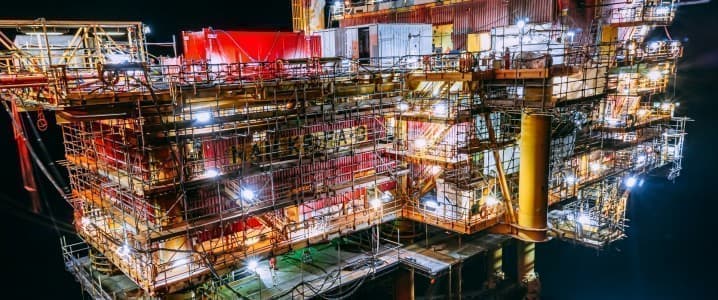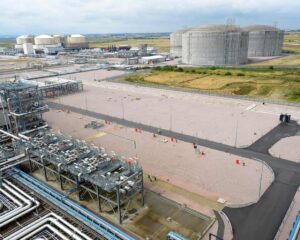
Suriname is gearing up to develop its offshore oil reserves, potentially positioning itself as a significant player in the global energy market. As neighboring Guyana solidifies its reputation with impressive production numbers and substantial reserves, Suriname’s own oil ambitions are coming into focus, particularly around Block 58. This area, operated by TotalEnergies and APA Corporation, is expected to see first oil production by 2028, marking a crucial milestone for the nation.
The offshore oil narrative in Guyana commenced with the discovery of the Liza-1 well by ExxonMobil in 2015, leading to first oil in 2019. Currently, production from the Stabroek Block exceeds 660,000 barrels per day (b/d), with forecasts suggesting that output could surpass this figure significantly in the coming years. Estimates indicate that reserves in the region range from 11 to 13 billion barrels. The rapid development of Guyana’s oil sector has transformed it into a top-tier producer, with substantial economic benefits including enhanced infrastructure, increased public sector wages, and efforts aimed at economic diversification.
In contrast, Suriname’s oil exploration began more recently. The country shares the same hydrocarbon-rich geological basin as Guyana but has faced different challenges. Focus has shifted to Block 58, which is seen as Suriname’s most promising development. A final investment decision is anticipated by late 2024, with production aimed for 2028. The Gran Morgu field is projected to yield between 200,000 and 220,000 b/d at peak production, drawing on approximately 700 million barrels in reserves. Staatsolie, Suriname’s state oil company, holds a 20% stake in this venture.
Challenges have arisen in other areas, notably Block 59, where major operators like ExxonMobil and Equinor have withdrawn due to exploration difficulties. With water depths reaching over 3,500 meters, this block represents one of the deepest frontier zones in the Atlantic Margin. The high costs associated with drilling and technical uncertainties have caused operators to reevaluate their investments, leading to the block being returned to Staatsolie.
The geological characteristics of Suriname’s offshore areas vary significantly. While Gran Morgu in Block 58 offers favorable conditions for oil production, other regions, such as Block 59, present increased risks due to geological uncertainties. Recent drilling by Shell in Block 65 resulted in disappointing outcomes, reinforcing the need for precise seismic analysis and cautious exploration strategies.
Despite these concerns, analysts remain optimistic about Suriname’s potential. According to forecasts from Rystad Energy, up to 10 wells may be drilled in Suriname’s offshore sector by the end of 2026, reflecting ongoing interest in the region’s resource potential. TotalEnergies and APA are expected to invest between $9 billion and $10 billion in the Gran Morgu development, significantly impacting a country with historically modest oil production.
Suriname’s government is also taking steps to enhance local capabilities through training initiatives and partnerships with educational institutions. TotalEnergies has pledged to support domestic supplier development, though significant scaling up in engineering and regulatory capacities will be essential. Political factors may also play a role, as the current administration under President Jennifer Geerlings-Simons has indicated continuity in energy policy while prioritizing social investments.
The political landscape is evolving, with recent elections in May 2025 resulting in a narrow victory for the National Democratic Party (NDP). The administration’s approach includes the “Royalties for Everyone” initiative, aimed at distributing future oil revenue through $750 savings bonds to citizens. This populist measure indicates a commitment to sharing the benefits of oil wealth, though Suriname still lacks a formal sovereign wealth fund or long-term fiscal framework. In comparison, Guyana has established the Natural Resource Fund Act, providing structured financial management of its oil revenues.
As Suriname approaches its first oil production in 2028, the next few years will be critical. The challenges of deepwater drilling, coupled with the need for robust institutional frameworks and public engagement, will determine the success of its oil ambitions. While Suriname may not match Guyana’s production scale or reserve size in the immediate future, it is on course to establish itself as a competitive producer in the region. The geological potential exists, but the real test will be in the decisions made in Paramaribo and the ability to navigate the complexities of oil development.







